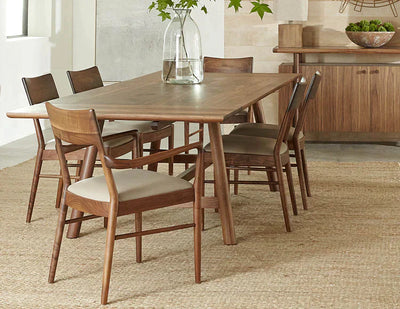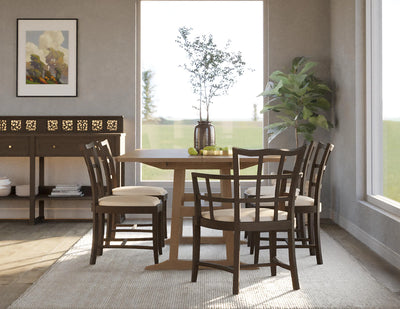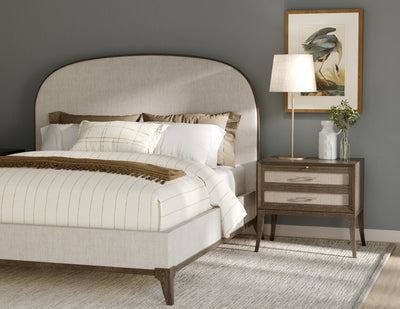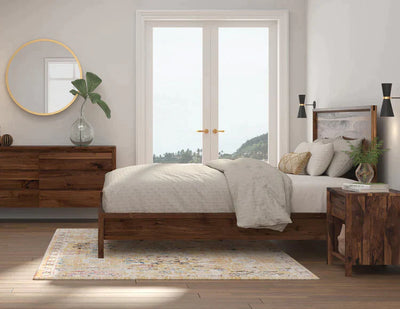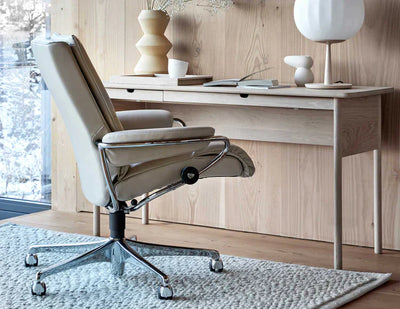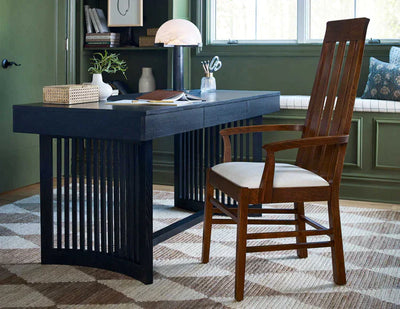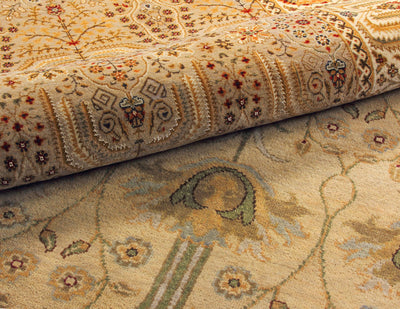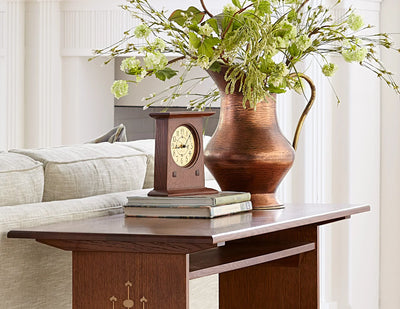
Caring for Craftsman Furniture: A Short Guide
Minimally ornamented Craftsman furniture is about function over form, yet in making an artistic display of humble and fine workmanship, it has cultivated an entirely unique aesthetic that produces a form all its own.
With that said, traditional Craftsman furniture, or Mission-style furniture, is made largely from solid wood and requires care and attention to keep it looking its best.
Care and Best Practices for Craftsman Furniture
For those of you fortunate enough to have a few pieces of traditional Craftsman furniture in your homes, the following suggestions, guidelines, and best practices will ensure you can keep it in top shape.
- Dust your wooden furniture frequently to prevent dust accumulation over time. Use a slightly damp cloth (microfiber is great) to wipe down the surface. Distilled water is optimal for cleaning as it dries completely and will leave no scale or residue. Never use a completely dry cloth as this can actually scratch the finish.
- Clean up any spills immediately with a damp cloth.

- Never place an extremely hot or cold plate/mug (or anything else) directly on the surface of the wood. These can damage the finish and even discolor the wood underneath. The general rule is, if it’s too hot for you to handle, it’s too hot for the wood.
- If applying a glass top to the table, do not use felt with glue, cork, or plastic dots between the layers, as these can interact with (and damage) the wood finish.
- As a general rule, it is safe to apply cotton, linen, or wool covers/pads to Craftsman furniture, but you should fastidiously avoid synthetics like polyester, vinyl, and plastics, as well as rubber, cork, or leather with synthetic finishes. These can interact negatively with wood finishes (like lacquer) and leave marks that will be nearly impossible to remove without refinishing the surface.
- Lift, rather than sliding, objects across the surface of fine wooden furniture to avoid scratching it; be careful when placing electronics on the surface, which often have rubberized feet that can leave marks or damage the finish.
- If possible, avoid contact with direct sunlight for prolonged periods of time. Ultraviolet radiation can discolor wood over time (as well as fabrics and upholstery) and it can also damage finishes. Not all glass filters out UV (low-E glass, particularly) so be aware of that when arranging furniture in your home.
- Protect your furniture against extremes of temperature and relative humidity, both of which can cause the furniture to swell, in extreme cases, causing warping or cracking. Don’t place your furniture in front of direct heat sources like heat vents, fireplaces, or radiators.
- Never use harsh detergents on your furniture. Substances that should never come in contact with your furniture include alcohol, acetone (present in nail polish remover, and a harsh solvent that will dissolve lacquer), bleach, ammonia, oil-based soaps, and silicone. All abrasive agents should also be avoided.
- For general cleaning, warm water and a damp rag should be all you need to clean the surface finish. For lacquered furniture, you can use a concoction of water and vinegar in a 4:1 ratio; never use vinegar on polyurethane, though. You can also use a tiny bit of dish soap and some warm water, as dish soap is not likely to damage most commercial wood finishes. Be sure to wash away all soap residue and thoroughly dry after cleaning.
- Use felt pads when placing anything on the tabletop — real wool, not acrylic — as a barrier to prevent scratching the finish.

- Lemon oil and orange oil smell nice, but overapplying them will leave a sticky finish that will become increasingly hard to remove and which will attract dust. Our advice is not to use them, or to be extremely sparing.
- Never mix wood-care cleaning products or polishes, as doing so can damage many finishes.
- Whatever wood care product you use, do not overapply it. In most instances, application two to four times per year is more than enough. Overapplying wood care products is the number one reason for sticky, gummy finishes and dull surface appearances.
- If you ever have to move a piece of heavy Craftsman furniture, lift it, don’t drag it. Dragging will create stress on the legs. Lift carefully and get assistance if necessary.
Questions About Caring for Your New Craftsman Furniture?
Following these best practices for furniture care will give you a distinct pride of ownership, as well as the opportunity to become owner of a treasured heirloom that you will be able to hand down at the end of the day.
We also recognize that with some many special wood care products out there, it can be tough to know what to apply (and not to apply) along with how to do so responsibly. Consult our Furniture Care Guide for details, and if you have further questions about the care of your new Craftsman furniture, feel free to contact us at Stickley.information@Stickley.com and we will be happy to help.




